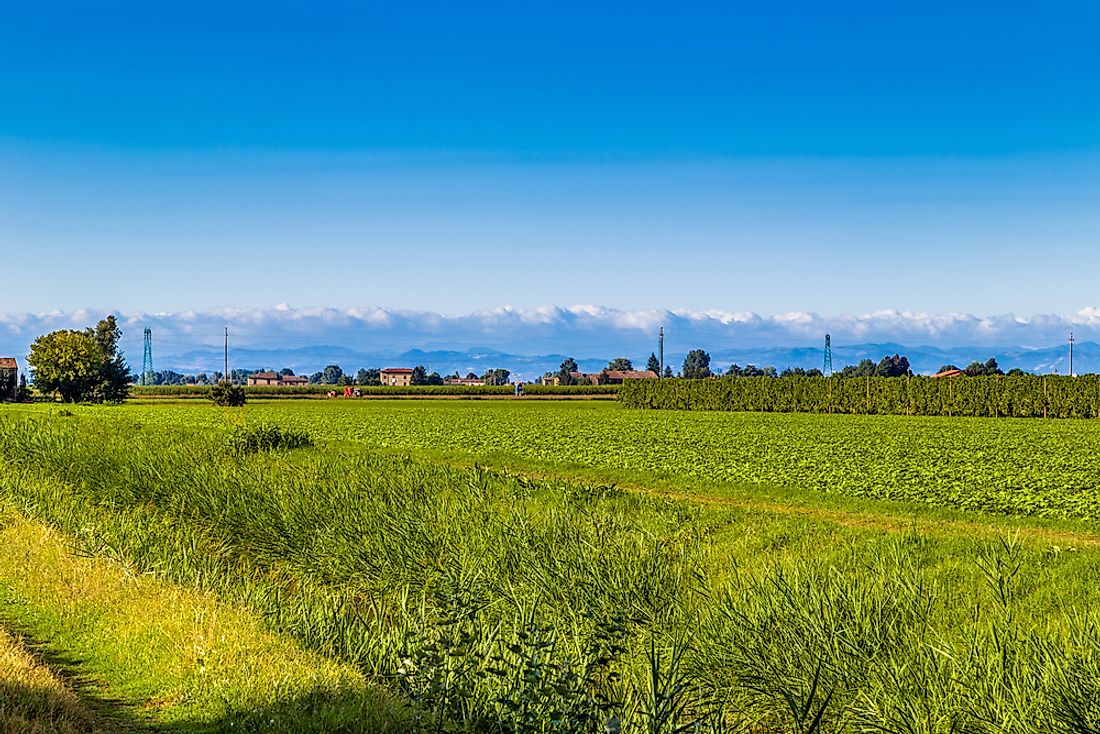What is an Alluvial Plain?

An alluvial plain is a large flat landform that is created from the deposition of sediment or debris over a long period by rivers from the highlands. Sediments are brought about by weathering and erosion then water and wind transport the debris along. Once the deposited sediments increase, they form alluvial soil. The process of transporting the sediment by water is called fluvial process. Sediments are formed when there are floods which carry debris along the way. When the waters of the river subside, the sediments are deposited and with time an alluvial plain emerges.
Examples Alluvial Plains
One example of are the Mississippi alluvial plains which were created by the Mississippi River passing through seven US states: Illinois, Missouri, Kentucky, Tennessee, Arkansas, Mississippi, and Louisiana. Other examples include Sawad in Mesopotamia, Punjab in India, the Indo-Gangetic Plain across India, Bangladesh, and Pakistan, Po Valley in Italy, Oxnard Plain in California, and many others around the world.
Definition
National Cooperative Soil Survey terms an alluvial plain as “a large assemblage of fluvial landforms with a low gradient and regional ramps along the flanks of mountains that extends great distances from their sources”. The information is recorded in the Glossary Landform and Geological terms and is maintained by the United States. The National Cooperative Soil Survey discourages terming broad floodplains or a delta with low gradients as an alluvial plain but prefers to be called a floodplain.
The Alluviation Process
Alluviation is the process of depositing debris by a river or stream. Alluviation is accelerated by the strength of the stream or river. When there is much rainfall, water from upstream increases in volume and speed. As the water speeds downstream, it carries with it everything that is loose including leaves and tree branches. The top soil is always carried away if there is no vegetation covering the land.
Alluvium can therefore be defined as the pile-up of debris made of all materials washed down having piled up with time. Materials come from silt, clay, sand, and gravel and when they knit together to form a lithological unit we get an alluvial deposit. A lithological rock is a description of the physical characteristic seen through low magnification microscope through the texture, grain size, and its composition.
Lithification
The process where the sediments compress together under pressure expelling connate fluids and gradually solidifying to form solid rocks is called lithification. During lithification, porosity is destroyed and consolidated sediments are converted into sedimentary rocks. Sediments are carried either as bedload or suspended load. There are two things that determine the quantity of sediment carried by a stream. Debris carried act as tools which accelerate wearing riverbeds through abrasion and much stress exerted by the river on a riverbed.
Alluvial Fan
An alluvial fan is a cone-shaped deposit built up by streams, an alluvial fan is also known as a colluvial fan. An alluvial fan is formed when a fast-flowing river or stream flattens out. A bajada is formed when all neighboring alluvial fans converge into a single line of deposit against a slope. A bajada is also a compound alluvial fan.











